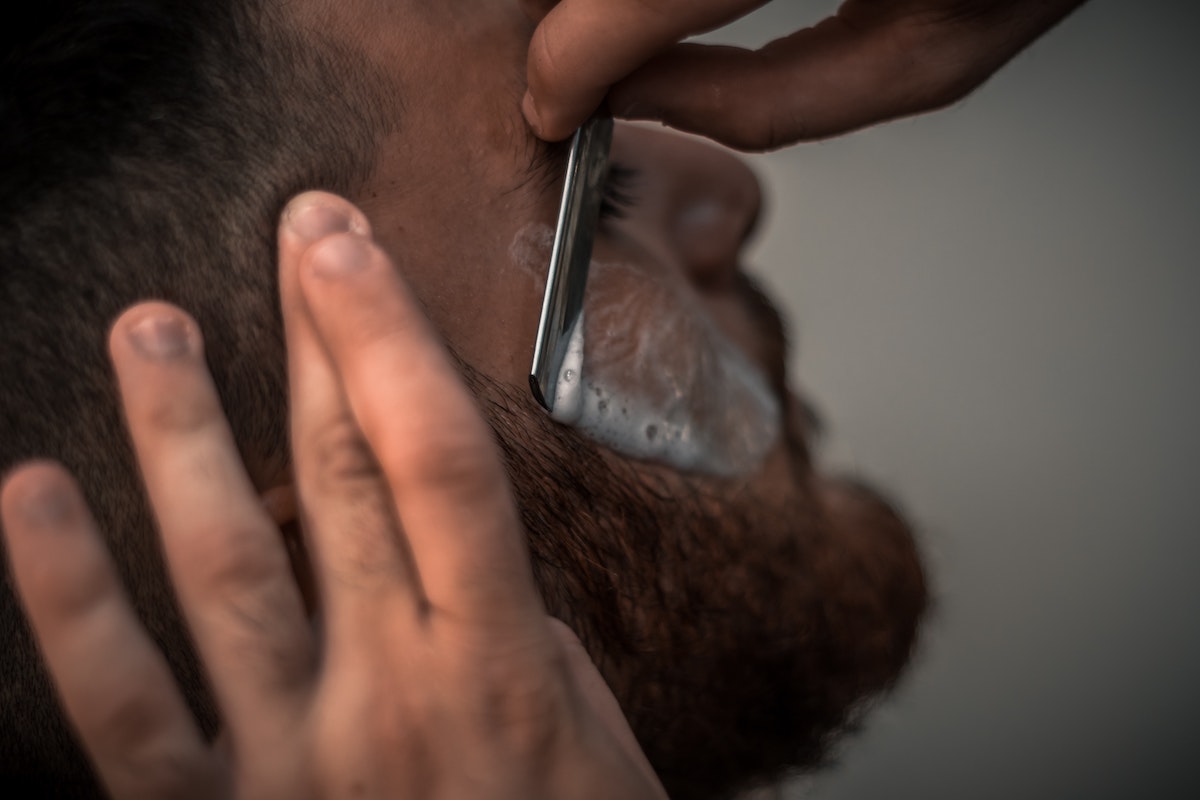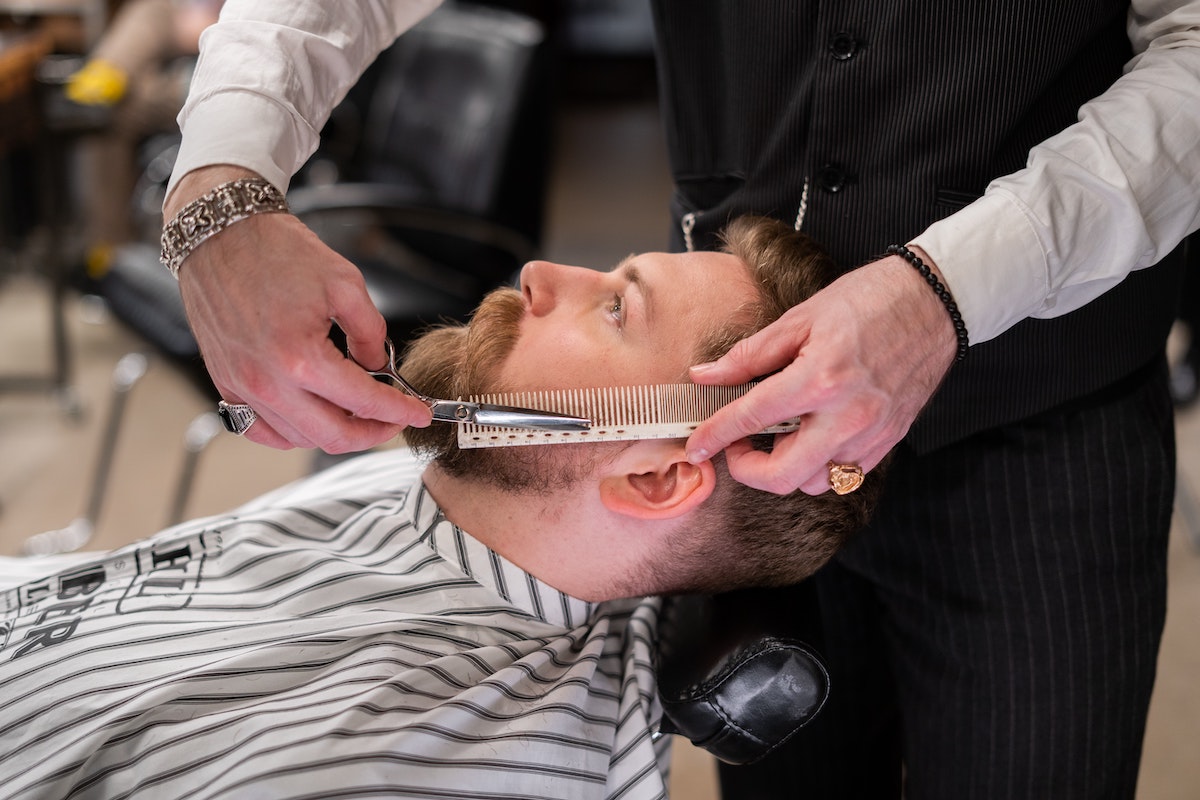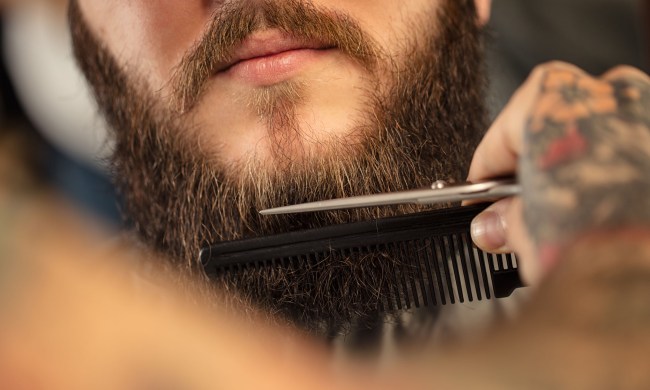
Embrace the process. You’ve probably heard this advice during fitness classes or when embarking on personal growth initiatives. Experts tell us the wisdom also applies to beard growth stages — yes, there are stages.
“Beards go through various stages of growth, each requiring specific care and attention,” said Dr. Hamdan Abdullah Hamed, MBChB, a board-certified dermatologist based in the UAE and co-founder of PowerYourCurls.com, a platform dedicated to providing natural hair care solutions for people of all hair types.
What are the stages of beard growth, and what tweaks should you make to optimize your grooming regimen during each? A pair of experts shared advice on the products and process you’ll want to use during every one of the beard stages.

The stages of beard growth and what your grooming routine should include
There are four beard stages: Pre-growth, early growth, mid-growth, and full growth. Two dermatologists explained when a person can expect each to happen and how to look your best every step of the way.
Pre-growth
Preparation is key. This phrase is probably another one you’ve heard during fitness, career, or personal improvement journeys. The stage is overlooked in beard care, but one expert says the pre-growth phase is important.
“Before embarking on a beard journey, it is important to prepare first,” said Dr. Harikiran Chekuri, a dermatologist and cosmetologist associated with ClinicSpots. Dr. Chekuri recommends:
- Cleansing the face with an exfoliator.
- Moisturizing.
- Trimming stray hairs with scissors. “You don’t want them sprouting up unpredictably during your growth process,” Dr. Chekuri said.
- Comb and brush facial hair regularly to stimulate follicle growth and promote fuller, healthier hair.
- Optional: Use a mild pre-shave oil to reduce irritation and inflammation if you frequently experience ingrown hairs or razor bumps.
Early growth stage (0-4 weeks)
When growing a beard, the early weeks are critical. Here’s how to handle them.
- Patience is a virtue. “Allow your beard to grow without trimming for the first few weeks to achieve a fuller appearance,” Dr. Hamed said.
- Maintain cleanliness. Dr. Hamed recommends using a gentle cleanser on facial hair regularly to remove excess dirt and oil.
- Moisturize. “Apply a beard oil or balm to keep the skin and hair hydrated, reducing itchiness and promoting healthy growth,” Dr. Hamed said. Dr. Chekuri adds that balms and oils will also add shine and help manage “unruly hairs.”
- Work with the natural pattern. Toward the end of this stage, you may need to take out the scissors. Do so with care. “Once your beard has started coming in, it will become apparent which direction your facial hair is growing in,” Dr. Chekuri said. “It’s important to work with the natural pattern of growth and trim any strays hairs that don’t fit into the desired shape.”
Mid-growth (4-12 weeks)
As your facial hair becomes more obvious, you’ll need to step up your grooming game.
- Groom regularly. Dr. Hamed suggests trimming the beard every few weeks for maintenance and to “promote even growth.”
- Invest in your facial hair. Dr. Chekuri agrees that regular trims are now essential and considers quality scissors and combs investments for precise trims. They may not be enough, though. “Depending on how fast your beard grows, regular visits to the barber might be necessary if you want to maintain a certain length or style,” Dr. Chekuri said.
- Hydration is key. Hydration isn’t just for hot days and exercise. “Keep your beard hydrated with regular applications of oil, balm, or conditioner to prevent split ends and promote healthy hair growth,” Dr. Chekuri said.
- Brush or comb. Just like the hair on your head (if you have that), facial hair requires brushing or combing. “Use a beard brush or comb to detangle the hair, remove any debris, and stimulate blood circulation to the hair follicles,” Dr. Chekuri said.
- Shape the beard. Do your beard your way with styling that suits you. “Consider using a beard wax or styling product to help shape and control your beard, especially for achieving specific styles,” Dr. Hamed said.
Full growth (12 weeks and beyond)
Congrats — your beard has peaked. Now what?
- Deep cleansing. Cleanliness remains critical and may be even more essential now that you have achieved the ideal facial hair length. Dr. Hamed recommends using a beard-specific cleanser.
- Trim and shape. “Regularly trim your beard to maintain a desired length, shape the neckline, and define the beard’s edges,” Dr. Hamed said.
- Style. “Utilize beard styling products like beard balms, waxes, or pomades to groom, condition, and style your beard,” Dr. Hamed said.
- Have fun. Now that you have achieved your desired length, you can have fun with different styling options (or stick to one you love). “With a full-grown beard comes the opportunity to experiment with different styling products,” Dr. Chekuri said. “Styling wax can be used to add texture and shape to facial hair, while light pomades can help keep flyaway hairs in place. A finishing cream can also provide shine and soften the look of your beard without leaving it greasy.”

On-going care, regardless of beard growth stages
Beard growth stages require nuanced care. However, some non-negotiables apply to whatever stage of your facial hair journey you find yourself in.
- Stay clean. Dr. Chekuri recommends regular washes with an all-natural shampoo or conditioner.
- Hydration. You likely noticed that moisturizer was mentioned throughout the beard stages. Dr. Hamed says there’s a good reason for that — it helps you “keep the hair and skin well-hydrated and healthy.”
- Brush and comb. This one is another mainstay. “Brush or comb your beard daily to untangle knots, distribute natural oils, and maintain a neat appearance,” Dr. Hamed said.
- Avoid heat. “This could damage the hairs and cause split ends,” Dr. Chekuri said.
Regardless, try to embrace the journey and have some fun.



